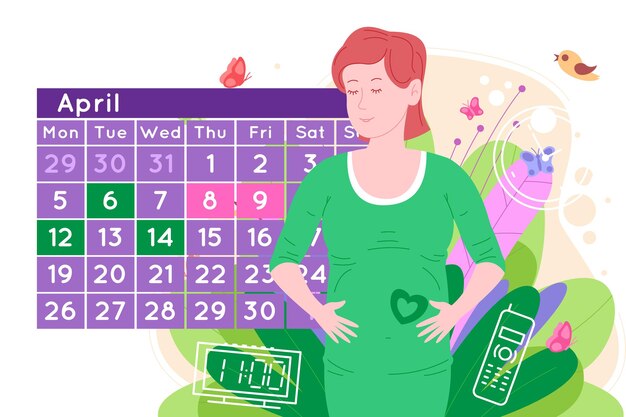When you're navigating the ups and downs of your menstrual cycle—especially on painful days—it's easy to feel drained and sluggish. Whether it's cramps, fatigue, or mood swings, your energy levels often take a hit. But did you know that something as simple and natural as breathing can be a powerful tool to re-energize your body and mind?
Let’s explore how breathing exercises can support your energy and well-being, especially when movement feels limited or intense workouts aren’t an option.
🌬️ Why Breathing Exercises Help During Menstruation
Breathing is your body’s most essential function. Yet, during stressful or painful days, we tend to breathe shallowly, limiting oxygen flow. Deep, intentional breathing does the opposite—it increases oxygen intake, calms your nervous system, reduces pain, and boosts energy naturally.
Incorporating just 5–10 minutes of breathing exercises daily during your period can:
-
Reduce menstrual cramps
-
Relieve fatigue and bloating
-
Improve mood and focus
-
Increase oxygen supply and circulation
-
Support emotional regulation
🧘♀️ 8 Energizing Breathing Exercises for Painful Days
Here are 8 gentle yet effective breathing exercises you can try anytime during your cycle—especially on days when you need a natural energy boost without overwhelming your body.
1. Diaphragmatic Breathing (Abdominal Breathing)
How to Do It:
-
Sit or lie comfortably with one hand on your chest and the other on your belly.
-
Inhale deeply through your nose, letting your belly rise.
-
Exhale slowly through your mouth, letting your belly fall.
-
Repeat for 2–3 minutes.
Why It Helps:
Calms the nervous system, improves oxygen flow, and reduces anxiety or cramp-related tension.
2. Box Breathing (Square Breathing)
How to Do It:
-
Inhale for a count of 4
-
Hold the breath for 4
-
Exhale for 4
-
Hold again for 4
(Repeat 4–5 rounds)
Why It Helps:
Great for mental clarity and grounding when mood swings or fatigue hit hard.
3. Alternate Nostril Breathing (Nadi Shodhana)
How to Do It:
-
Use your right thumb to close your right nostril.
-
Inhale through the left nostril.
-
Close the left nostril with your ring finger.
-
Exhale through the right nostril.
-
Inhale through the right, close it, and exhale through the left.
(Repeat for 5 minutes)
Why It Helps:
Balances energy, calms the mind, and supports hormonal balance.
4. 4-7-8 Breathing
How to Do It:
-
Inhale through the nose for 4 seconds
-
Hold your breath for 7 seconds
-
Exhale slowly through the mouth for 8 seconds
(Repeat 3–4 times)
Why It Helps:
Reduces pain and anxiety, helps with sleep, and boosts energy by calming the nervous system.
5. Kapalabhati (Skull Shining Breath)
Note: Avoid if you’re experiencing heavy cramps.
How to Do It:
-
Sit with a straight spine.
-
Take a deep breath in.
-
Exhale forcefully through the nose while pulling the belly in.
-
Passive inhale, active exhale (do 20–30 times)
Why It Helps:
Increases alertness, improves circulation, and clears brain fog.
6. Bhramari (Humming Bee Breath)
How to Do It:
-
Close your eyes and gently plug your ears with your index fingers.
-
Inhale deeply.
-
Exhale slowly while humming (like a bee sound)
(Repeat 5 times)
Why It Helps:
Relieves tension, headaches, and irritability—perfect for PMS and painful periods.
7. Sitali Pranayama (Cooling Breath)
How to Do It:
-
Roll your tongue into a tube (or purse lips if unable to roll)
-
Inhale through the rolled tongue
-
Close the mouth and exhale through the nose
(Repeat for 2–3 minutes)
Why It Helps:
Cools the body, reduces heat and inflammation, and refreshes the mind.
8. Gentle Breath-to-Movement Flow
How to Do It:
-
Pair slow, deep inhales and exhales with gentle stretches like cat-cow, side bends, or child's pose.
-
Inhale as you open/stretch, exhale as you curl or relax.
Why It Helps:
Enhances blood flow, relieves muscle tension, and gently lifts energy without intensity.
💡 Tips for Practicing Breathing Exercises on Painful Days
-
Find a quiet, comfortable space—use cushions or props if needed.
-
Practice early in the morning or mid-afternoon to beat energy slumps.
-
Stay hydrated and combine breathing with warm tea or a heating pad.
-
Don’t force any breath—if it feels uncomfortable, pause and breathe normally.
-
Even 5 minutes can make a noticeable difference!








